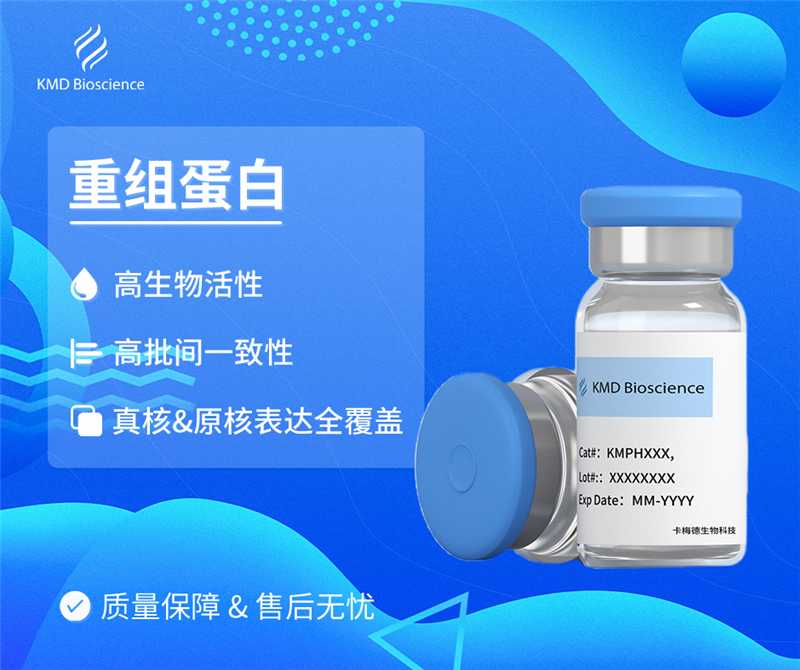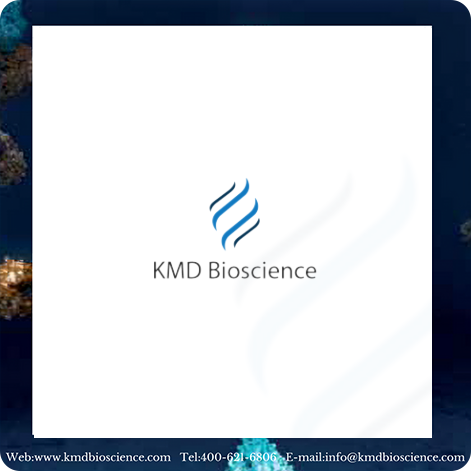| Catalog Number | KRP563 |
| Alias | 细胞粘附分子1, Cell adhesion molecule 1 , Immunoglobulin superfamily member 4, IgSF4, Nectin-like protein 2, NECL-2, Spermatogenic immunoglobulin superfamily, SgIgSF, Synaptic cell adhesion molecule, SynCAM, Tumor suppressor in lung cancer 1, TSLC-1, IGSF4, IGS |
| Size | 20ug, 50ug, 100ug, 200ug, 1mg |
| Product Description | Human CADM1(39-375 aa) |
| Molecular Name | CADM1 |
| Product Introduction | 细胞粘附分子1参与细胞间的粘附与信号传递,抑制肺癌发展。。 |
| Molecular Weight | 70-80 kDa |
| Expression System | HEK293F Cells |
| Species | Human |
| Concentration | 联系销售经理获得最新批次的浓度 |
| Purity | ≥90% |
| SDS-PAGE |  |
| Purification | Affinity Purification |
| Uniprot ID | Q9BY67 |
| Storage Condition | Store the product under sterile conditions after opening at -80℃ for 12 months. Store the lyophilized powder at -20℃. Avoid repeated freeze-thaw cycles. |
| Formulation | Supplied in PBS |
| Shipping Condition | This product is shipped on ice packs or dry ice. |
| Background | Mediates homophilic cell-cell adhesion in a Ca(2+)-independent manner (PubMed:12050160, PubMed:22438059). Also mediates heterophilic cell-cell adhesion with CADM3 and NECTIN3 in a Ca(2+)-independent manner (By similarity). Interaction with CRTAM promotes natural killer (NK) cell cytotoxicity and interferon-gamma (IFN-gamma) secretion by CD8+ cells in vitro as well as NK cell-mediated rejection of tumors expressing CADM1 in vivo (PubMed:15811952). In mast cells, may mediate attachment to and promote communication with nerves (PubMed:15905536). CADM1, together with MITF, is essential for development and survival of mast cells in vivo (PubMed:22438059). By interacting with CRTAM and thus promoting the adhesion between CD8+ T-cells and CD8+ dendritic cells, regulates the retention of activated CD8+ T-cell within the draining lymph node (By similarity). Required for the intestinal retention of intraepithelial CD4+ CD8+ T-cells and, to a lesser extent, intraepithelial and lamina propria CD8+ T-cells and CD4+ T-cells (By similarity). Interaction with CRTAM promotes the adhesion to gut-associated CD103+ dendritic cells, which may facilitate the expression of gut-homing and adhesion molecules on T-cells and the conversion of CD4+ T-cells into CD4+ CD8+ T-cells (By similarity). Acts as a synaptic cell adhesion molecule and plays a role in the formation of dendritic spines and in synapse assembly (By similarity). May be involved in neuronal migration, axon growth, pathfinding, and fasciculation on the axons of differentiating neurons (By similarity). May play diverse roles in the spermatogenesis including in the adhesion of spermatocytes and spermatids to Sertoli cells and for their normal differentiation into mature spermatozoa (By similarity). Acts as a tumor suppressor in non-small-cell lung cancer (NSCLC) cells (PubMed:11279526, PubMed:12234973). May contribute to the less invasive phenotypes of lepidic growth tumor cells (PubMed:12920246). {ECO:0000250|UniProtKB:Q8R5M8, ECO:0000269|PubMed:11279526, ECO:0000269|PubMed:12050160, ECO:0000269|PubMed:12234973, ECO:0000269|PubMed:12920246, ECO:0000269|PubMed:15811952, ECO:0000269|PubMed:15905536, ECO:0000269|PubMed:22438059}.; [Isoform 5]: (Microbial infection) Induces cell fusion in neuron infected by a neuropathogenic strain of measles. Interacts with measles hemagglutinin to trigger hyperfusogenic F-mediated membrane fusion and presumably transsynaptic cell-to-cell transmission of the virus. {ECO:0000269|PubMed:37166307}. |
| Endotoxin | < 0.1 EU per ug |
| Biological Activity | Measured by its binding activity in a functional ELISA. Immobilized Recombinant Human CRTAM Fc Chimera at 2 µg/mL (100 µL/well) can bind Recombinant Human IGSF4A/SynCAM1 with a linearrange of 3-200 ng/mL. |
| Product Declaration | 该产品仅供科研使用,不可直接用于人体或注射。 |













 0
0
